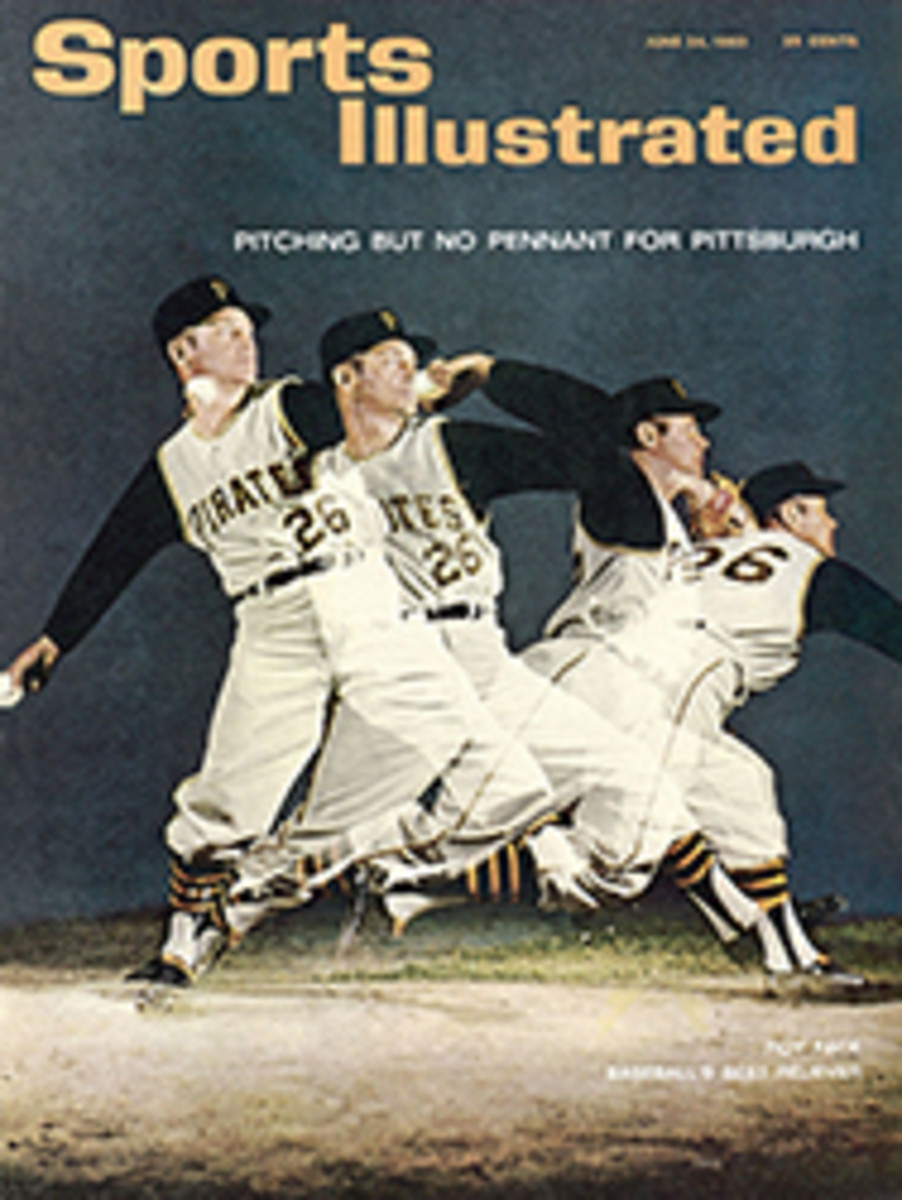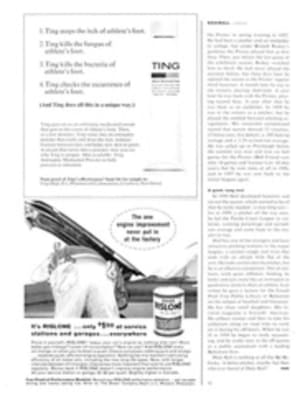
THE FORK BALL AND ROY FACE
Extend the fore and middle fingers of your right hand and you will make a fair facsimile of the letter V, an anatomical phenomenon that has been put to good use by at least one prime minister and several million smokers. When ElRoy Face of the Pittsburgh Pirates extends these fingers, however, they come out of his right hand like the letter U. Face wasn't born that way. This aberration came from stuffing a National League baseball deep into the cleft of his fingers, something he has been doing constantly since 1953 in order to throw a pitch called the fork ball. And it is largely because Roy Face can throw a fork ball with accuracy and speed that he is the best relief pitcher in the National League.
No player is in more demand—or in shorter supply—these days than a good relief pitcher. So exacting is the job that there are even specialists among specialists; some come into a game early, some in the middle innings and some late. Face is one of those who take a nap for the first six innings. As a late (or "short") man he is one of the glamour boys of the relief corps. He does not pitch much, but if he gives up even one run, it usually is a calamity.
Relief pitchers generally are big, powerful fellows who stalk out of the bullpen and blow the opposition down with raw power, but Roy Face looks like the prize in the bottom of a Cracker Jack box. He is only 5 feet 8 inches tall, wears false teeth, and his expression is as mournful as a man who has just been drafted. But what Face lacks in size and beauty, he makes up for in determination. He throws so hard it sometimes seems that his right arm will jump out of its socket. He puts so much umph into his pitches that all 155 pounds of him quiver, says a teammate, "like a little ol' wet mouse shaking itself dry."
In spite of Face's unheroic stature, he has all the requisites of the great relief man: endurance, resiliency, control and guts. Once he pitched in nine straight games. "My arm throbbed until I fell asleep," he said, "but it felt great the next morning." He has a portfolio of solid pitches that includes a fast ball, a curve and a slider besides his blue-chip fork ball. And he is unconcerned by impossible situations. "I don't let base runners bother me," he says blandly—which is fortunate because there are inevitably a number of them around when Pirate Manager Danny Murtaugh waves him in. And Face is asked to pitch often—376 times since 1957—which is almost every other time the Pirates have played.
Face has won 76 ball games and lost 68, with a lifetime earned run average of 3.50. Once, in 1959, he won 18 games and lost just one to set a major league record. But the fact that Face gets into so many ball games shows his worth more than any statistic, particularly since statistics are customarily misleading in the case of relief pitchers. "He's simply the best we have," says Murtaugh, "so we use him." In one game Face came in to pitch with the bases loaded and no outs. Two fork balls and a slider later the side was out.
Baseball has been blessed with other excellent relief pitchers, of course, and in a given year a number may have had more spectacular seasons than Face. But good year, bad year, good year, bad year is the normal pattern for relief pitchers or, even more often, one superb season followed by oblivion. Face's form chart, however, reads like Sahara temperatures at high noon—consistently high—and only Hoyt Wilhelm of the White Sox has approached his annual excellence.
Face arrived in Pittsburgh in 1953, a draftee off the Dodgers' Montreal farm team. In Pittsburgh he caught sight of ex-Yankee Joe Page throwing a strange pitch: the fork. Sent to the minors in '54, Face worked hard on the pitch, and when he came back to Pittsburgh the next season hardly anyone was able to hit this strange darting thing that acted like a cross between a knuckle ball and a sinker. "How do you know which way it will go?" Face was once asked. "I don't," he said, "but neither does the batter."
On May 30, 1958 Milwaukee beat him 7-4. After that, no one beat him for a year and a half, during which time Face appeared in 98 games and won 22 of them. Finally he threw the wrong pitch to the Dodgers' Charlie Neal. "I feel the same way losing as winning," he said afterward, "except I'm happier winning."
Mostly Face has remained a very happy fellow. A carpenter by early inclination (his grandfather, father, two brothers and five uncles followed that trade around his home town, Stephentown, N.Y.), Face has left cabinetmaking for the off season and has parlayed his fork ball into a $50,000-a-year pitching job with the Pirates. Such is his fame that he has also been paid as much as 510,000 for a series of public appearances that consists largely of strumming a guitar and yodeling. Roy Face is not beloved in Pittsburgh for his nightclub act, however, but because, as Casey Stengel says it: "He walks in there and commences pounding."

